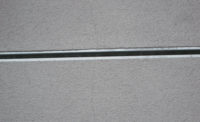Watching industries evolve, expand or wither out has always fascinated me. I believe things do not just happen: events, action, lack of promotion or even complacency occur and this can shift trends. I have been in the stucco business for almost half a century and the changes are nothing less than mind boggling. We tend to believe what we want to hear. I believe that what I did for decades was acceptable but I could be in denial about the real cause of some problems. Not being progressive and unwilling to accept changes in today’s explanation of how stucco works may be true. However, I offer the following perspective as a seasoned veteran in plastering and past project manager for a forensic architecture firm. I live in a house that according to building science experts should have failed decades ago. Yet, the old cement stucco is doing very well and my framing is dry. I know this because I remodeled.
I have heard rumors that conventional stucco over framing cannot work, because we put holes into the building paper to attach the lath and these are conduits for moisture intrusion. When I asked why it worked for decades and only recently became a problem, I am told it is because we build differently today. We are more air tight. While I see changes in the way we build, is this really the issue or just marketing? Are we solving problems that do not exist?
Job Site Discussions
I was with a true advocate for sealing nail holes in the black paper as we walked the construction site prior to plastering and had a good discussion. He noted the nails in the paper will cause leaks. He used the rationale that building science has changed. The project was cement stucco over two layers of black paper. I asked what is so much different than what we did 40 years ago? I wanted more detailed explanations. He simply stuck to the mantra, buildings are different today. Is this not like the contractor who repeats, “I have always done it that way.”
What makes either side right? Are there self-serving agendas at work? Here are three statements that make sense to me:
- The contractor might support the leaky fastener theory because it makes the leak not his fault. After being drug through litigation and blamed for everything, this is the out and shifts blame.
- The manufacturer sees a crisis as an opportunity—they can make a product(s) to solve a problem.
- The consultant can make money on more elaborate designs and site inspections.
Country-wide Tests
We have tests upon tests and real-world buildings all over the country verifying cement plaster over a building paper works fine and not just in the desert. When a picture is shown of water dripping off the tip of the fasteners, we should ask, “Was this a completed assembly? Is the plaster and the interior finish (drywall) in-place? Since both are code approved air barriers, how did the negative pressure get there? Was copious amounts water being pumped between the cement and the building paper?” The conventional system is only meant to handle incidental moisture penetration.
I am not advocating we do not try to improve our walls to be better. Yet quick profits can result in long term losses. Cement stucco is not nearly as popular on commercial buildings as it was a few decades ago. Many young commercial designers are concerned and some have taken advantage of this trend to upsell goods and services. The tipping point occurs when designers opt to select other claddings. While we have seen a significant demise in commercial plaster market share, will it follow interior gypsum plaster? The designer could lose out on a cladding that was non-combustible with unlimited design options for textures capable to be formed to any desired shape. The building owner loses an exterior wall covering that is permanent and meant to last the life of the structure with the lowest maintenance. This is not rhetoric—ASTM STP 1269 has proven it.
The independent research of the manual on life-cycle costing by Nelson and Kroll show cement stucco as the lowest cradle-to-cradle cost compared to other claddings over a 30-year period. This was for conventional cement plaster on metal framing on a medium size commercial structure. If others can re-invent stucco, they can control the market and dictate our future. Make no mistake, stucco has competition. To protect cement stucco, we must recognize that we are a specialty trade and not just a subcontractor.







